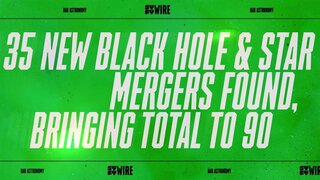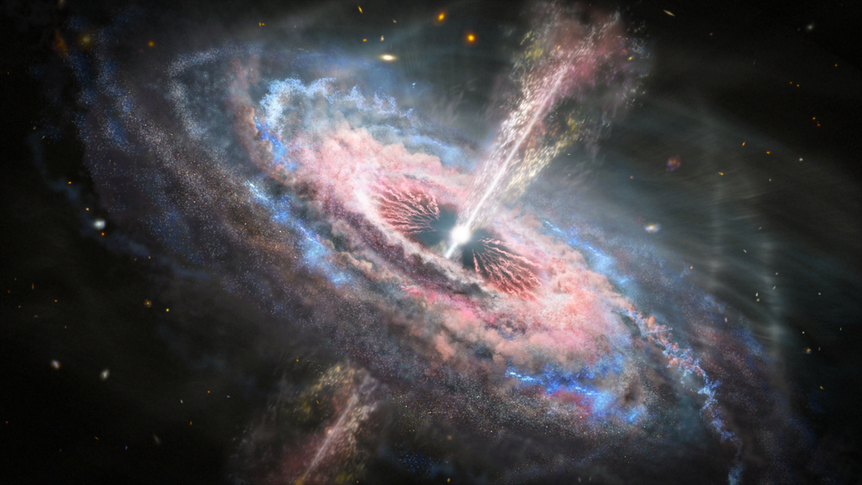Create a free profile to get unlimited access to exclusive videos, sweepstakes, and more!
Biggest and Hungriest Black Hole Ever Discovered Eats a Sun a Day
And the chaos surrounding it might be the brightest object in the universe.
Back in 1999, astronaut John Crichton (Ben Browder) strapped himself inside an experimental spacecraft and accidentally ended up on the other side of the galaxy in Farscape, streaming now on Peacock. If Crichton went all the way to the far side of the galaxy, as far from here as it’s possible to get while still being inside the Milky Way, he’d be about 66,000 light-years from here, give or take.
That’s an incredible distance, far enough to see some of the most incredible sights the galaxy has to offer, but if you want to catch the real hits, you have to go deeper into both space and time. Recently, real world astronomers from the Australian National University caught sight of what appears to be the brightest, hungriest and largest black hole ever discovered. The results of this historic discovery were published in the journal Nature Astronomy.
Largest Black Hole Ever Is Hungriest, Brightest, and Most Massive We’ve Ever Seen
About 12 billion light-years from here, nestled in deep space and deep time, there is an object unlike any we’ve seen before. The object in question is a quasar, a particularly active black hole at the center of a galaxy. The quasar was first detected using the 2.3-meter telescope at the ANU Siding Spring Observatory. Later, scientists confirmed the finding with the European Southern Observatory’s Very Large Telescope.
Black holes famously gobble up everything that falls within their event horizon, including light, but quasars are surrounded by an accretion disk of matter, like the rings of Saturn on stellar steroids. That disk whips around the black hole super-fast, generating heat and light that we can see with our telescope, even 12 billion light-years away.
For More on Black Holes:
JWST Spies Oldest Black Hole Ever Found at the Fringes of the Known Universe
Parasitic Black Holes Could Be Eating Some Stars (Including the Sun) from the Inside
"Scary Barbie" Black Hole Slurps Up a Star Like Spaghetti
“It’s a surprise it remained undetected until now, given what we know about many other, less impressive black holes. It was hiding in plain sight,” said Christopher Onken, one of the study’s authors, in a statement.
The accretion disk can also tell us something about how the black hole in its center behaves. More specifically, it can tell us about how much the black hole eats. Astronomers estimate that their distant quasar gobbles up the equivalent mass of the Sun every single day. Assuming we’re not seeing it through a gravitational lens, this quasar is expected to be the largest in the known universe.
“The incredible rate of growth also means a huge release of light and heat. So, this is also the most luminous known object in the universe. It’s 500 trillion times brighter than our Sun,” said Christian Wolf, the study’s lead author.
Scientists describe the violent environment like a storm cell 7 light-years across. “It looks like a gigantic and magnetic storm cell with temperatures of 10,000 degrees Celsius, lightning everywhere, and winds blowing so fast they would go around Earth in a second,” Wolf said.
On second thought, maybe it’s best that Crichton didn’t encounter this star-gobbling monstrosity. Sounds like the sort of thing you want to stay as far away from as possible.
Catch Farscape, the complete series, streaming now on Peacock.































